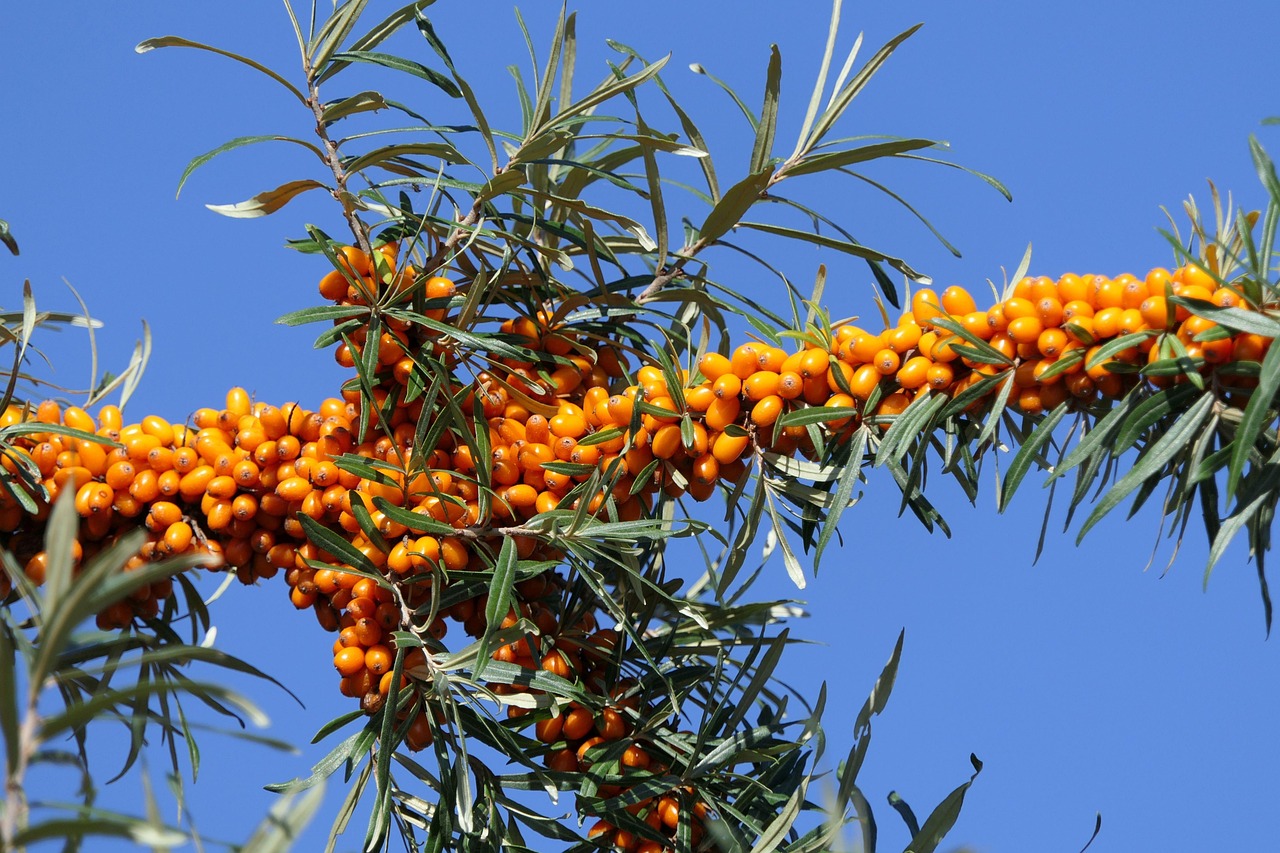
Sea Buckthorn
Hippophae rhamnoides
Basic Information
🌿 Family: Elaeagnaceae🗺️ Zone: 3-7
Other Names:
- Seaberry
- Sandthorn
- Sallowthorn
🌡️ Ideal Temperature : 50°F – 77°F
🔥 Heat Tolerance: Up to 95°F
❄️ Cold Tolerance: Down to -40°F
🌱 Type: Perennial
Layers
- Shrub
Functions
- Edible
- Nitrogen Fixer
- Wildlife Attractor
- Erosion Control
- Windbreaker
- Medicinal
Pests
No pests associated with this plant.
Companions
- Nitrogen-loving plants
Plants to Avoid
- Shady trees
Description
Sea Buckthorn is a hardy, deciduous shrub that typically grows between 2 to 4 meters (7 to 13 feet) in height. It features rough, brown or black bark and a dense, grayish-green crown. The leaves are narrow, lanceolate, and silvery-green on the upper surface. This dioecious plant requires both male and female specimens for fruit production, with wind facilitating pollination. Female plants produce vibrant orange berries that are soft, juicy, and rich in oils. The plant develops an extensive root system that fixes nitrogen, making it valuable for soil enrichment and erosion control.
🌞💧 Sun and Water Requirements:
Sea Buckthorn thrives in full sunlight and is intolerant of shady conditions. It is exceptionally hardy, withstanding winter temperatures as low as -40°F (-40°C). The plant prefers well-drained soils and demonstrates remarkable drought and saline tolerance once established.
✂️🫘 Methods to Propagate:
Propagation is commonly achieved through seeds or hardwood cuttings. Seeds require stratification and should be sown in well-drained soil. Hardwood cuttings can be taken during dormancy and rooted in a suitable medium.
🧑🌾👩🌾 When to Harvest:
The bright orange berries typically ripen from late summer to early autumn. Harvesting can be challenging due to the plant's thorny branches and the berries' tendency to adhere firmly to the stems. Utilizing specialized berry-picking tools or pruning entire berry-laden branches for easier collection is recommended.
Purpose
- **Edible**: The berries are rich in vitamin C, antioxidants, and healthy fats, making them suitable for juices, jams, and dietary supplements.
- **Nitrogen Fixer**: Its root system fixes atmospheric nitrogen, enhancing soil fertility and benefiting neighboring plants.
- **Wildlife Attractor**: The dense branches provide shelter, while the berries offer a food source for various bird species.
- **Erosion Control**: Its extensive root system stabilizes soil, making it effective for preventing erosion on slopes and riverbanks.
- **Windbreaker**: When planted in rows, it serves as an effective windbreak, protecting other crops and reducing soil desiccation.
- **Medicinal**: Traditionally used in various cultures for its potential health benefits, including skin care and immune support.